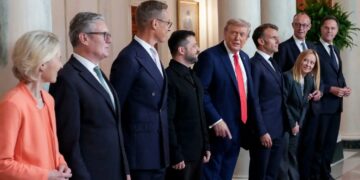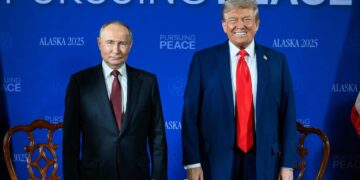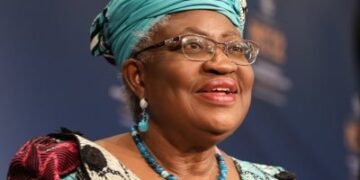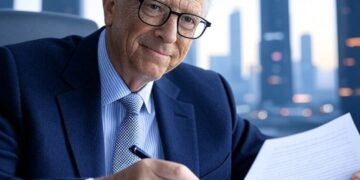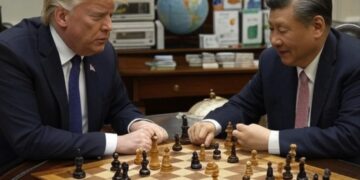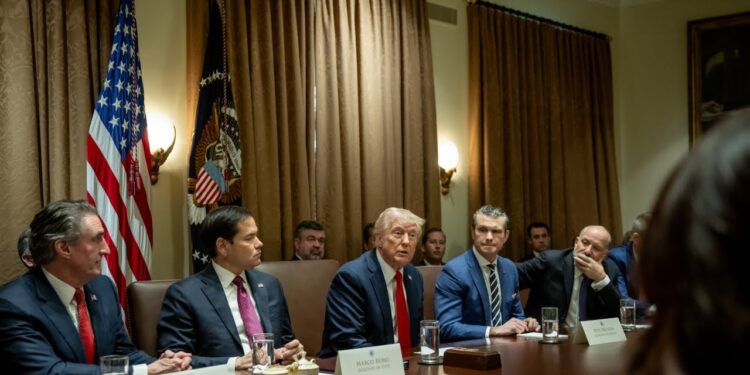In a high-energy White House Cabinet meeting on July 8, 2025, President Donald Trump and his top officials unveiled a sweeping array of policy announcements, from aggressive tariffs to historic investments, signaling a transformative agenda for America’s economic and national security future. The meeting, described as a direct address to the American people, covered critical issues ranging from trade and border security to energy, agriculture, and international diplomacy. Here’s a detailed breakdown of the key revelations that stakeholders need to know.
Tariffs: A “Tremendous” Economic Weapon
President Trump touted the success of his tariff strategy, claiming it has brought “tremendous amounts of money” into the U.S. Treasury, with an estimated $100 billion collected this year alone, according to Treasury Secretary Scott Bessent. Bessent projected that tariff revenue could exceed $300 billion by year’s end, surpassing Congressional Budget Office estimates of $2.8 trillion over the next decade. A new wave of tariffs, set to take effect August 1, 2025, targets 14 countries, including Japan and South Korea (25% tariffs), and BRICS nations, which face an automatic 10% levy for their “anti-American policies” aimed at undermining the U.S. dollar’s global reserve status. Trump emphasized that these tariffs are non-negotiable, stating, “No extensions will be granted,” though he hinted at openness to deals that eliminate trade barriers. A 50% tariff on copper imports was also greenlit during the meeting, with Trump approving the rate on the spot after a recommendation from Bessent, signaling more sector-specific tariffs on the horizon, including pharmaceuticals.
Homeland Security: Border and Disaster Response
Secretary of Homeland Security Kristi Noem highlighted her leadership in Texas’ recent flash flood response, where Coast Guard members and BORTAC teams rescued over 165 people and cleared debris. Trump claimed illegal border crossings dropped to “zero last month,” underscoring his administration’s aggressive immigration enforcement. Noem’s efforts signal a robust approach to both natural disasters and border security, reinforcing the administration’s focus on domestic safety.
Defense: Military Might and Recruitment Surge
Defense Secretary Pete Hegseth announced the success of Operation Midnight Hammer, a 37-hour B2 bomber mission that “obliterated” every target with precision. He also reported historic highs in military recruitment across all branches, bolstered by a $150 billion investment in weapons systems and shipbuilding. These moves position the U.S. military as a dominant force amid global tensions, with Trump expressing frustration with Russian President Vladimir Putin’s actions in Ukraine, citing 7,000 weekly casualties and calling for an end to the conflict.
Justice and Epstein Files: A Tantalizing Mystery
Attorney General Pam Bondi addressed the Epstein files, revealing they are under review alongside JFK and MLK assassination documents. Bondi noted a missing minute from a nightly reset in the video evidence of Jeffrey Epstein’s suicide, fueling speculation but offering no further details. The announcement has sparked intense public interest, with stakeholders awaiting clarity on these high-profile cases.
Energy and Environment: Slashing the Green New Deal
Interior Secretary Doug Burgum and EPA Administrator Lee Zeldin celebrated the dismantling of the Green New Deal, with Zeldin describing a “sledgehammer” bill that rescinded billions in environmental subsidies. The move saved an estimated $500 billion over a decade, redirecting funds from groups Zeldin accused of funneling money to bloated bureaucracies. Burgum highlighted record-low gas prices during the July 4th weekend and claimed inflation is effectively “zero” after six months, positioning the administration as pro-energy and anti-regulatory.
Transportation: Modernizing Air Traffic Control
Transportation Secretary Sean Duffy unveiled a $12.5 billion investment to overhaul the nation’s outdated air traffic control system, which dates back to the 1950s-70s. By consolidating management under one company instead of 3,000 contractors, Duffy aims to streamline operations and enhance safety, marking a historic modernization effort.
Agriculture: Countering Chinese Influence
Agriculture Secretary Brooke Rollins raised alarms about Chinese farmland purchases near U.S. military bases, calling it a “massive national security issue.” A forthcoming press conference with the Defense Secretary and Attorney General will address this threat. Meanwhile, Trump outlined a farm worker policy balancing mass deportation of “criminals” with a new H-program office to ensure farmers have labor without displacing American workers.
Gaza Negotiations: A Ceasefire in Sight?
Gaza negotiator Steve Witkoff reported progress in proximity talks, reducing four sticking points to one, with hopes for a 60-day ceasefire agreement by week’s end. The deal includes the release of 10 live hostages and nine deceased, alongside increased UN aid distribution. Trump’s meetings with Israeli Prime Minister Benjamin Netanyahu signal active U.S. involvement, though controversial relocation proposals for Palestinians drew criticism from allies and human rights groups.
International Investments: A Trillion-Dollar Boost
Trump announced a staggering $5.1 trillion investment commitment from Saudi Arabia, UAE, and Qatar, described as the “biggest investment ever made” in the U.S. These funds will target energy projects and other “big things,” reinforcing America’s economic allure on the global stage.
What’s Next?
The Cabinet meeting’s announcements paint a picture of an administration doubling down on economic nationalism, military strength, and strategic diplomacy. The tariff escalation risks trade wars, with the EU and China already planning countermeasures, but Trump’s team sees these as leverage for better deals. The focus on Chinese farmland, Gaza negotiations, and massive foreign investments signals a multifaceted approach to national security and economic growth. Stakeholders should brace for volatility in global markets and trade relations, with August 1, 2025, looming as a critical deadline for tariff negotiations.
This bold agenda, blending economic protectionism with assertive foreign policy, underscores Trump’s vision of an “America First” future.





